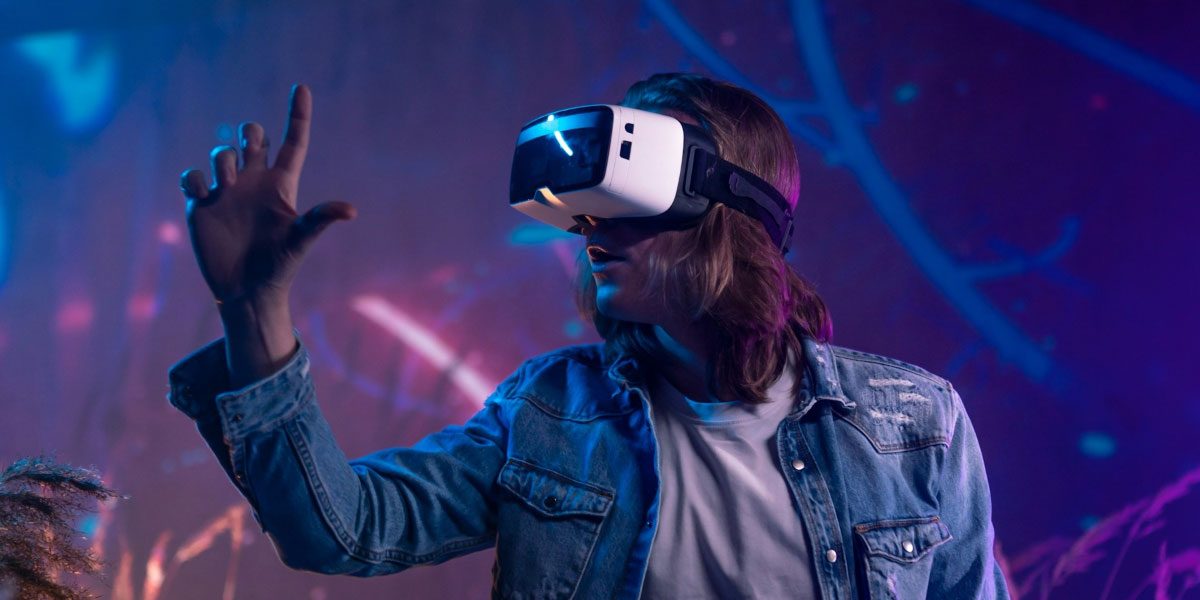Immersive technology, encompassing virtual reality (VR), augmented reality (AR), mixed reality (MR), and extended reality (XR), is increasingly seen as a key driver of innovation. From revolutionizing industries to creating new business models, immersive technologies offer transformative potential. As advancements in hardware, software, and connectivity continue to shape its future, immersive tech is not just an enhancement to existing systems but a catalyst for entirely new ways of thinking and doing. This article explores why immersive technology is pivotal to the future of innovation.
Immersive technology is a catch-all term for digital experiences that merge or completely replace the physical world with virtual or enhanced environments. This includes technologies such as virtual reality (VR), which creates entirely computer-generated worlds, augmented reality (AR), which overlays digital elements onto the real world, and mixed reality (MR), which blends physical and digital objects in real-time. Extended reality (XR) is an umbrella term that covers all these immersive experiences.
Immersive technology has evolved from early experimental applications in the 1980s and 1990s to become a dynamic field that is now a central part of technological innovation. The key drivers of this innovation include advancements in hardware (e.g., VR headsets and haptic feedback devices), software development (e.g., immersive gaming and educational apps), and more recently, cloud computing and 5G connectivity, which enable more fluid, real-time experiences.
Read also: How New York is Adapting to Machine Learning (ML) Strategies
Immersive Technology as a Catalyst for Innovation
Accelerating Creativity
Immersive technology has become a powerful tool for fostering creativity. Digital artists, designers, and filmmakers are using virtual environments to create complex and engaging experiences that were once impossible. For example, VR enables 3D modeling and design in real time, allowing creators to manipulate virtual objects and scenes as if they were physical. These tools are not only allowing for more sophisticated artistic expression but also facilitating new forms of interactive storytelling, where the user’s actions can influence the outcome of a narrative.
Immersive environments are also transforming industries like architecture, where designers use VR to walk through virtual building models before construction begins. This level of interaction leads to enhanced problem-solving and more dynamic design processes.
Revolutionizing Consumer Experiences
Immersive technology is fundamentally changing how consumers interact with products and services. In retail, AR is enabling virtual try-ons, where customers can see how clothes, accessories, or makeup look on them without physically trying them on. This shift not only enhances the shopping experience but also enables brands to reach more customers, as these digital experiences can be accessed remotely.
In the entertainment space, VR is creating entirely new forms of media, including interactive gaming and immersive movies. These innovations provide deeply engaging experiences that draw users into the narrative, enabling them to feel like active participants rather than passive viewers. This evolution in consumer experience is making immersive tech a central tool for industries seeking to enhance user engagement and satisfaction.
Enhancing Productivity and Collaboration
Immersive technologies are also changing the way we work. In the corporate world, virtual workspaces are allowing teams to collaborate remotely in 3D environments, providing a more engaging and effective alternative to traditional video calls or text-based communication. These virtual meetings can include interactive elements, like virtual whiteboards, collaborative design tools, and even avatars representing each team member.
For industries like healthcare and engineering, VR and MR technologies are enhancing productivity by providing realistic simulations for training and problem-solving. Surgeons can practice complex procedures in virtual environments, gaining experience without risk to patients. Similarly, engineers can use AR and MR to overlay digital schematics on physical equipment, enabling real-time problem-solving and maintenance in the field.
Industry Applications of Immersive Technology
Immersive technology is making a significant impact across various industries. Here are some key examples:
Healthcare
In healthcare, immersive technology is proving to be invaluable. VR is being used for surgical training, allowing medical students and professionals to practice procedures in a safe, controlled environment. Additionally, VR-based therapy is being utilized for the treatment of PTSD, anxiety, and phobias, offering patients a way to confront fears or memories in a therapeutic setting.
Augmented reality is also transforming healthcare by helping surgeons visualize and interact with patient data in real time. For example, AR can overlay diagnostic images, like MRIs or CT scans, onto the patient’s body during surgery, providing critical information without the need for physical paperwork or additional screens.
Education
Immersive technology is revolutionizing the way we learn. In traditional classrooms, VR allows students to take virtual field trips to historical landmarks or explore scientific phenomena in an immersive environment, providing hands-on experience without leaving the classroom. This form of learning can engage students in new and more impactful ways, particularly for complex subjects like medicine, engineering, or history.
AR is also used in education to bring textbooks to life, with students able to interact with 3D models that enhance their understanding of concepts. For underserved communities, immersive education technologies can offer access to resources and learning opportunities that may otherwise be unavailable.
Retail and E-Commerce
Immersive technology is enhancing consumer shopping experiences through virtual showrooms, product demonstrations, and AR-driven navigation. Retailers are creating virtual environments where customers can walk around and examine products in detail. This not only improves the shopping experience but also reduces the need for physical stores, helping businesses reach wider audiences.
Technological Advancements Driving Immersive Innovation
Hardware Innovations
Advancements in immersive hardware are making these technologies more accessible and effective. High-quality VR headsets, like the Meta Quest and HTC Vive, are becoming more affordable, lightweight, and comfortable. Furthermore, innovations in haptic feedback and motion tracking allow for more realistic and immersive experiences, where users can feel, touch, and interact with digital objects.
Software and Content Development
Software platforms like Unity and Unreal Engine are enabling developers to create highly detailed and interactive environments that push the boundaries of what immersive technology can do. These engines allow for the creation of real-time simulations, multiplayer experiences, and AI-driven content, which are crucial for the next wave of immersive innovation.
5G and Connectivity
The rollout of 5G networks is accelerating the potential of immersive technology. With its low latency and high-speed capabilities, 5G enables real-time VR and AR experiences, allowing for smoother, more responsive interactions. As 5G becomes more widespread, immersive technologies will be able to deliver content faster and with higher resolution, enhancing user experience across industries like gaming, healthcare, and education.
Challenges and Barriers to Widespread Adoption
While immersive technology presents significant opportunities, there are still challenges to overcome. One major barrier is the high cost of hardware, which can make immersive experiences inaccessible to some consumers and businesses. Additionally, the development of high-quality content is still a costly and time-consuming process.
Privacy and security concerns also persist, particularly with AR and VR technologies, which often require users to provide personal data. Ensuring that immersive platforms are secure and protect user privacy will be crucial for widespread adoption.
Read also: Low-Code Platforms: Revolutionizing Development or Just a Passing Trend?
The Future of Immersive Technology
The future of immersive technology looks incredibly promising. As hardware becomes more advanced and accessible, and as software platforms continue to improve, the potential applications for VR, AR, and MR will continue to expand. The concept of the metaverse, a shared virtual space where users can work, socialize, and create, is gaining momentum, with many tech giants investing heavily in its development.
Moreover, the integration of AI, machine learning, and quantum computing into immersive technologies will further enhance their capabilities, allowing for more intelligent, adaptive, and personalized experiences. Over time, immersive technologies will likely become a ubiquitous part of daily life, from virtual workspaces to personalized digital environments.
Immersive technology is not just a novel trend—it is a transformative force across multiple industries. From healthcare and education to retail and entertainment, immersive technology is enhancing creativity, improving collaboration, and revolutionizing consumer experiences. While challenges remain in terms of hardware costs, content creation, and privacy, the potential for innovation is vast. As advancements in connectivity and hardware continue, immersive technologies will play an increasingly central role in shaping the future of work, entertainment, and daily life.
















